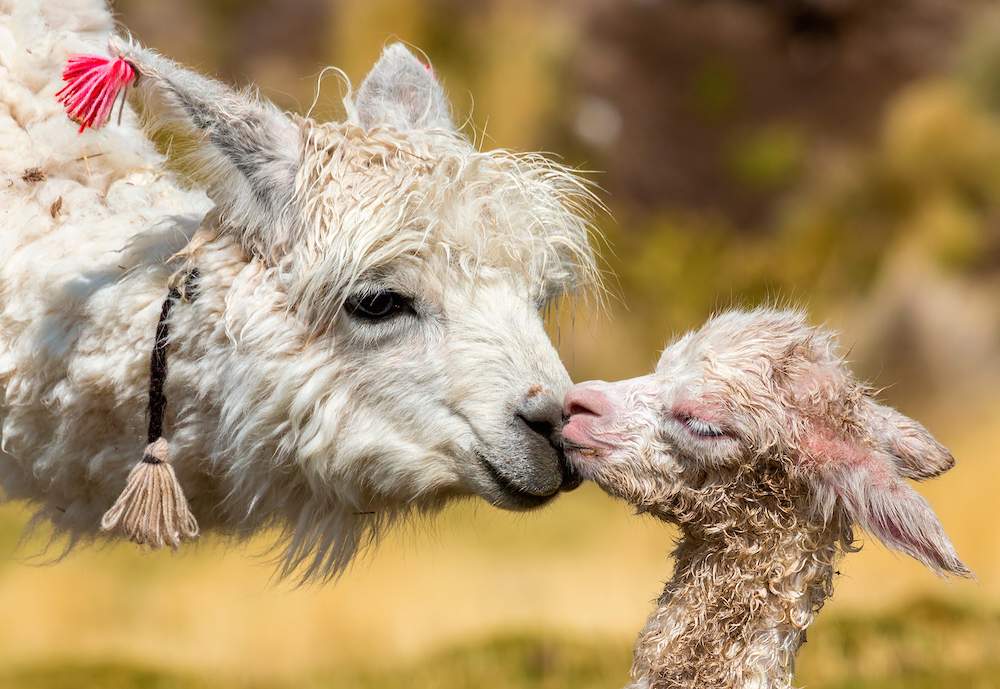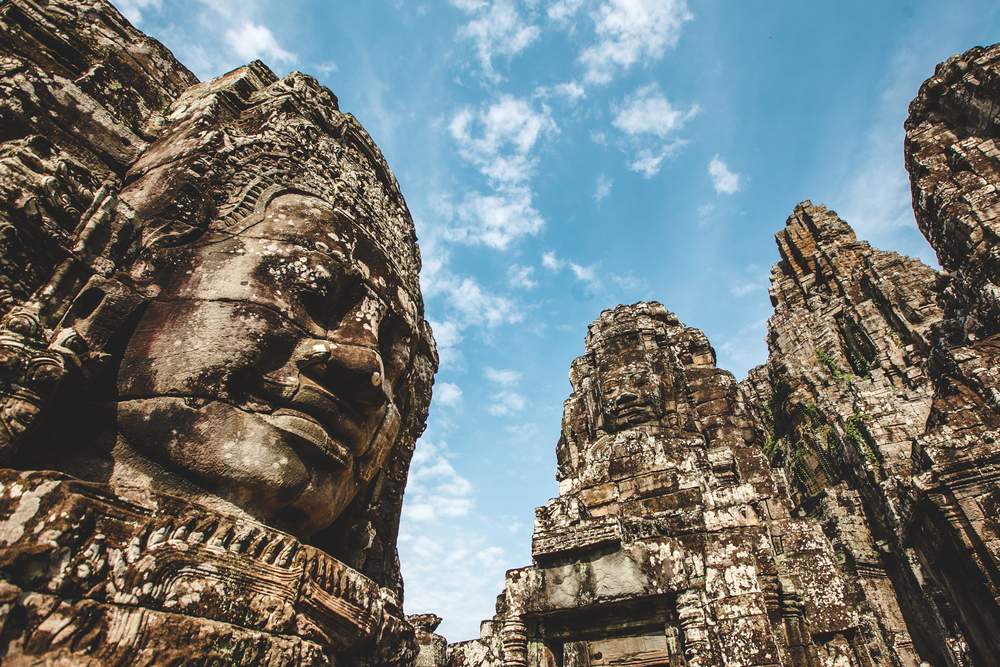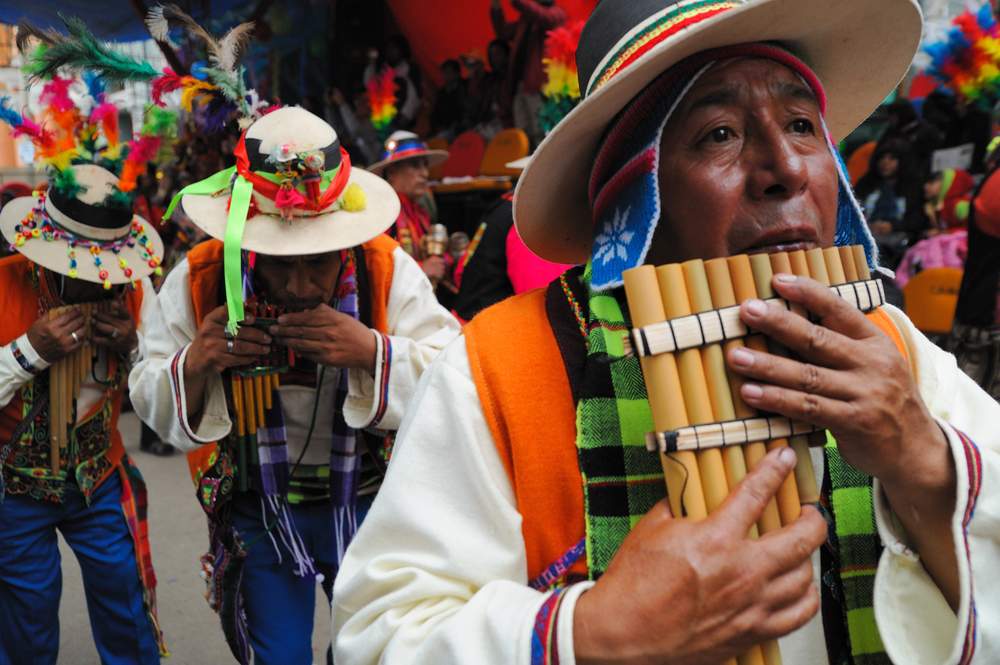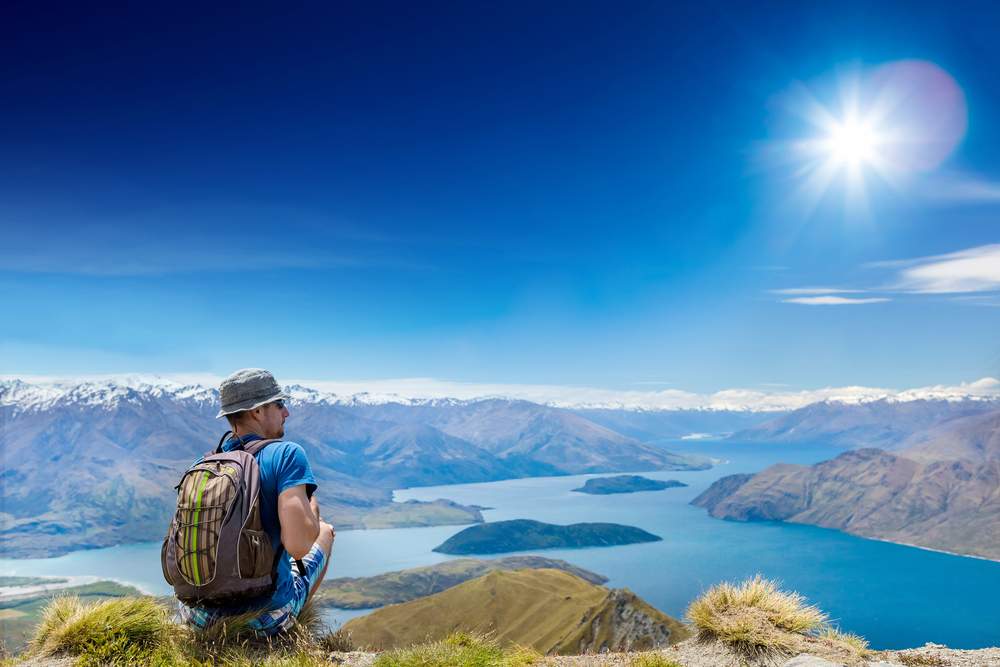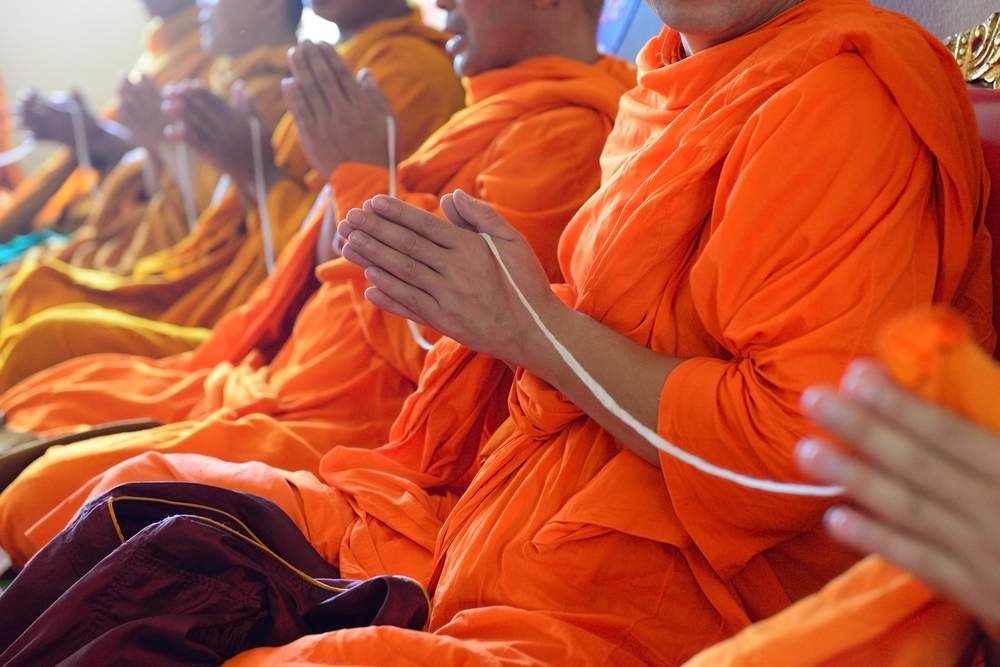Why You Should Take This Trip
Pros
- With the exception of New Zealand, every other region is extremely cheap to visit (<$35USD/day per person).
- It gives travelers a wide variety of culture, food, and weather (though variety of weather can be looked at as both a positive and negative).
- Outdoors? Check. Beaches? Check. Bustling cities? Check. Efficient overland travel? Check.
- You want some of the best and most impressive sites in the world? How about Machu Pichhu, Iguazu Falls, Patagonia, the Salt Flats, Angkor Wat, Halong Bay, and the Taj Mahal?
Cons
- If you don’t speak any Spanish, South America will be challenging (though taking language classes while there and fixing this problem is extremely easy if you’re up for it).
- While much of the overland transportation is nice, comfortable, and efficient (Argentina, Peru, Chile, Thailand, New Zealand), others….not so much (Bolivia, Laos, Vietnam).
- Weather can be tricky – balancing best times to go is difficult and takes some advance planning. You most likely won’t be able to visit every destination at the ideal time.
Why This Route?
This itinerary is a similar one to our RTW trip in 2008-2009. We didn’t have $100k to spend on our trip, so choosing budget friendly destinations was a necessity. So we immediately eliminated Europe, and while parts of Africa are extremely cheap to travel in, we nixed that as well since activities like safaris and gorilla trekking – notoriously expensive activities – were what we wanted, most, to do in Africa. So Africa would have to wait until a later date.
What’s Unique About This Route
Just in South America alone you can get a vast array of landscapes and scenery. From beaches in Colombia to jungles and mountains in Peru and Bolivia to glaciers in Argentina to big, concrete jungles in every country, South America really offers a lot. Then add in New Zealand, which speaks for itself when it comes to natural beauty, and the history of both Southeast Asia and India, and this trip really offers it all to travelers.
Who Does This Route Appeal To?
- Solo travelers shouldn’t have a difficult time getting around any of these regions and meeting people. The tourist trail is well trodden pretty much everywhere on this itinerary.
- This is great for couples as well, with cheap accommodations nearly everywhere (private rooms in hostels are prevalent on 99% of this trip).
- Backpackers can get by on the cheap everywhere but New Zealand, and if that just isn’t in the budget for this particular trip, taking it out and just doing South America, Southeast Asia, and India would still be a kick-ass trip.
- Families. I’m not one to put a limit on what families can, and can’t, do as far as travel. Families can certainly make this trip happen; it will just take a lot of pre-planning (but what trip with kids doesn’t take pre-planning?)
RTW Context
Practical Information
When to Go & Weather
This is the tricky part about this particular trip. I’ll break it down by region first, then discuss when to go where.
South America:
New Zealand:
Southeast Asia:
India:
What We Did
In Peru and Bolivia, October was the start of the rainy season, so it wasn’t overcrowded and the weather was a crapshoot. We were fortunate in that we didn’t see much rain. By the time we got south into Argentina, it was December and summertime. We visited Patagonia in January and February, which was the height of high season. Weather was generally good (for Patagonia) but crowds were big, which meant advance booking on both accommodations and transport was essential. We made it up to Colombia during March, which was also shoulder season. Lower crowds, lower prices, but the weather was hit or miss. Great some days and rainy others.
We spent May to August in Southeast Asia, which is the supposed rainy season. It was honestly a non-factor most of the time. The weather wasn’t ideal (lack of blue sunny skies), but at no time did rain hinder our activities or where we wanted to go. It generally rained each day, but not for long, and it was often welcome with the heat.
We arrived in India in late August, the end of the rainy season. Weather was a factor in the north (near Rishikesh and on a trek in the Himalayas) yet not a factor at all in Rajasthan or Mumbai. By the time we arrived in Goa for the last 2 weeks of our trip, we hoped to relax and enjoy the end of the rainy season. Instead we got about 8 days of unprecedented rain (the vendors had already sold off all their umbrellas and rain gear since the wet season was over).
The lesson? You really never know when it comes to weather, so while you always want to play the percentages, you never know what the weather gods will bring you.
Planning Details
Pricing
**Editor’s note** The current price through Indie is: $2006 if priced in March and April
- Through Indie: from $4209 including taxes and fees
- DIY through Kayak: $4337 including taxes and fees
- The dates we searched for this trip were October 16, 2013 through June 11, 2013.
- Prices can and will vary depending on a variety of factors, including dates and when you actually book.
Which Direction To Go
For us, we started in Peru in October simply because we found a great deal on a flight. In taking this route and schedule, we took the risk of traveling in SE Asia and India during the wet season, but this meant we could be in Argentina and Patagonia during the summer months. This also gave us the opportunity to hike the Inca Trail to Machu Picchu during the beginning of the rainy season, which minimized the risk of getting rained on (though any hike in the mountains is going to bring the risk of rain). We felt pretty fortunate for how the weather broke for us, with the exception of the last two weeks in India.
Vaccinations & Visas
You may need shots depending on a variety of factors, including your immunization history, your medical history and which countries you plan on visiting in what order. Consult the CDC website and your doctor for vaccination information.
Learn more about travel immunizations and visas for long-term travel
Packing
A few notes on packing – Obviously packing for a trip like this is going to depend on personal preferences. We both brought jeans despite the steadfast backpacking rule of not bringing jeans. We wear them all the time at home; they are what we’re comfortable in, and we both wore them all the time throughout both S. America and New Zealand, then ditched them before heading to Asia.
Trip Notes
5 Must-Sees in South America
- Machu Picchu (Peru) – This classic Incan site is one of the most touristy places in the world, but that’s because it truly is one of the most magical, memorable places not only in South America, but the world
- Salar de Uyuni (Bolivia) – The Salt Flats tour in Bolivia will make you feel like you’re on another planet. Truly one of the most unique places on Earth.
- Parque Nacional Tayrona (Colombia) – Tayrona is a tropical paradise located on the Caribbean coast of Colombia. If you avoid high season, you can have any number of beaches all to yourself while sleeping in a hammock at night for about $5-10USD.
- Iguazu Falls (Argentina, Brazil, Paraguay) – If you’ve ever been to Niagara, that will seem like a drippy faucet compared to the monstrosity that is Iguazu, which straddles the borders of three different countries.
- Patagonia (Argentina and Chile) – If you’re any kind of outdoor-lover, then visiting Patagonia should be on your bucket list. There aren’t many more impressive landscapes that what you’ll find in the southern reaches of Argentina and Chile.
South America Budget
On the cheap
If you’re traveling on a budget, South America is a great place to stretch your dollar. Some countries are cheaper than others (Bolivia is probably cheapest as backpackers can get by on about $20USD per day while Brazil is most expensive at closer to $50USD per day – all others fall somewhere in between). Budget travelers can find dorm beds for as low as $5USD in some countries with private rooms starting around $15-20USD. If you’re really watching your budget, you can get by for as low as $25 per day.
Mid-range
We were more mid-range travelers when we were in South America. We almost always stayed in private rooms, did pretty much everything we wanted from an activities standpoint, ate out when we wanted (but still cooked plenty of our own meals), and took two flights within the region. We averaged $44USD per day per person (in 2008-2009) and were pretty comfortable. Keep in mind we were in Patagonia during the height of high season, paid about $900USD for our Inca Trail hike, and also rented an apartment in Buenos Aires for a month. On a mid-range budget, which will have you staying in private, ensuite rooms, eating meals out at least once a day, and taking part in pretty much any activity you want, you could get by on about $35-50USD/day.
To read more about about South America and to book rooms and trips, check out the following links:
- Check out our South America Indie Travel Guide
- Read How to Plan an Extended Trip in South America
- Read Tips for Visiting the Salar de Uyuni in Bolivia
- Read the Step-by-Step Guide to Visiting Machu Picchu
- Read Five Unexpected Treasures of South America
- Check out hostels in South America
- Browse our adventure trips in South America
5 Heart Pumping Adventures in New Zealand
- Bungee jumping– There are a multitude of places to take part in this adrenaline pumping activity that was born here, but Queensland is the most popular.
- Skydiving– There aren’t many more dramatic landscapes to jump out of a plane over.
- Ice Climbing– You know what’s cool? Glaciers. You know what’s even cooler? Ice climbing on glaciers.
- White water rafting– Want to raft over the highest commercially rafted waterfall in the world? You can do this right outside of Rotorua.
- Zorbing – Another activity born in New Zealand, zorbing involves getting into a giant blown up ball and tumbling down a hill. You can do it either wet or dry.
New Zealand Budget
On the cheap
Traveling around New Zealand on a backpackers budget can be difficult, but it can be done. There is plenty of opportunity for camping to offset accommodation and restaurant costs. Tourist buses are more affordable than renting a car or campervan. And if you limit your adventure activities, you can probably get by on $75USD per day. In most places in New Zealand, you can get a dorm bed for around $15USD/day. Keep food costs down by going to one of the many grocery stores and utilizing hostel/campground kitchens.
Mid-range
If you’d like to have your own wheels, sleep indoors most of the time, eat out at restaurants some of the time, enjoy the delicious wine available, and take part in some adventure activities, then plan on spending closer to $100-150USD per day. Keep in mind that prices do change with the seasons. Summer months are going to be more expensive than the shoulder seasons.
To read more about about New Zealand and to book rooms and trips, check out the following links:
5 Things to Eat & Drink in Southeast Asia
- Any street food – If you like food, street food in particular, there aren’t many places in the world better. Wander around Bangkok for amazing street meals for the equivalent of $1USD.
- Pho – This Vietnamese specialty is a great way to start off your day. This beef noodle soup is typically eaten for breakfast by the Vietnamese, and it can be found all over the country. Best eaten on the street sitting on tiny plastic chairs and using the plethora of herbs and spices available.
- Durian – This stinky fruit is a specialty of Southeast Asia. If you’re walking around and catch a whiff of what smells like hot garbage, that’s durian. Not for the feint of heart.
- Fried bugs – Found all over the region, fried insects of all kinds are on offer. Grab a bag for a snack and freak out your friends and family back home. They really aren’t as bad as they look or sound.
- Bia Hoi – You will see this phrase written on signs outside makeshift bars all over Vietnam. It’s basically a home-brewed beer that is sold for about 25-30 cents. A great way to break up your day of sight-seeing or get drunk for cheap.
Southeast Asia Budget
On the cheap
Southeast Asia has been on the backpacking trail for decades, and one of the biggest reasons is because of the affordability. The most hard-core backpackers claim that they can get by on $10-15USD per day, but if you actually want to see and do some things, plan on spending closer to $25USD. Beds in dorms can be had for as low as $5USD (and even less in some areas). Street food meals can cost about a dollar. And buses and trains are plenty affordable .
Mid-range
If you plan on having a private room, the occasional air conditioned room, and some meals out in an actual restaurant here and there, you will probably spend closer to $35 per day. This will also afford you the occasional flight with the region and flexibility of taking nicer overland transport from time to time. We averaged about $20US/night for our accommodation, which always included a private room, mostly with air con, and some of the time with cable tv. Even if you eat out, as long as you stick to regional food and don’t splurge on western restaurants very often, you can eat meals for $5-10USD.
To read more about about Southeast Asia and to book rooms and trips, check out the following links:
5 Ways to Deal With Touts in India
- Say “No!” – “No!” will most likely be your most-used word while in India. Embrace it, say it loudly and confidently.
- No eye contact – Whatever you do, don’t look the touts directly in the eyes. While touts aren’t Medusa and you won’t turn to stone by looking them in eyes, sometimes that’s the better alternative.
- Be clear, direct, and confident – Touts can smell a newbie or someone who has their guard down. Unfortunately you have to be on your guard at all times if you want the hassles to be kept to a minimum. So walk with an air of confidence and be direct and confident in your statements and answers.
- Act like you’ve been there before – Lie. When a cab or rickshaw driver, or shop owner asks if this is your first time in India, your answer should always be a confident, “No!” Lie, act like you’ve been here many times before, and you’ll have a much less chance of being hassled to death.
- Smile – While the previous tips may have scared you off, not all touts, shop-owners, and cab or rickshaw drivers are awful. Sometimes a big smile and the Indian head waggle can go a long way in being transformed from being looked at like a big dollar sign.
India Budget
On the cheap
India is another one of those regions that can be done on a super low budget. Like Southeast Asia, the most bare-boned travelers can get by on $10-15USD per day, but if you want a bit of comfort, plan on spending closer to $20-25. Mumbai was surprisingly expensive, as budget accommodations are difficult to find, so keep that in mind when planning your trip.
Mid-range
If you prefer private rooms, restaurants, and the opportunity to sit in 1st or 2nd class on trains instead of 3rd or taking public buses everywhere, you’ll have to up your budget closer to $30-40USD per day. This will give you the opportunity to stay in some pretty nice places and not have to always rely on street food for your meals (though eating street food is highly encouraged no matter how high a budget you are traveling on).
To read more about about India and to book rooms and trips, check out the following links:
- Read through our India Indie Travel Guide
- Read Beyond the Golden Triangle: 8 Lesser Known Sites in Rajasthan, India
- Read 5 Tips for Traveling India by Train
- Read India’s Top Roadside Eateries
- Book a hostel in India
- Check out adventure trips in India
